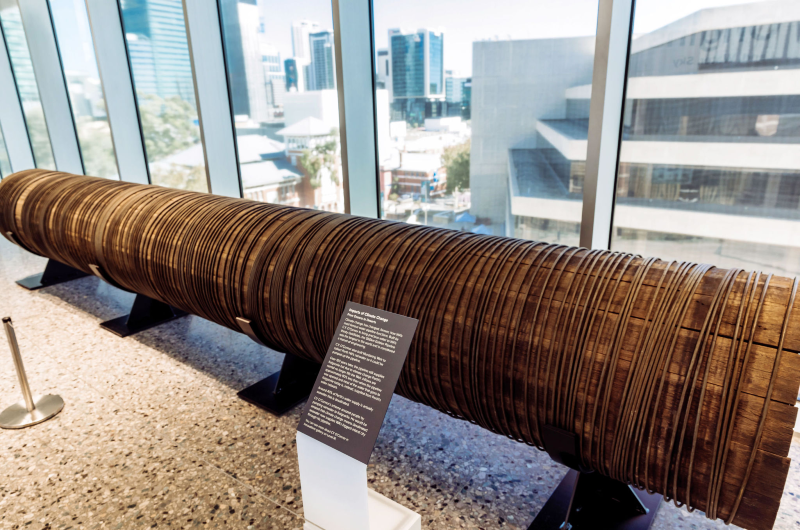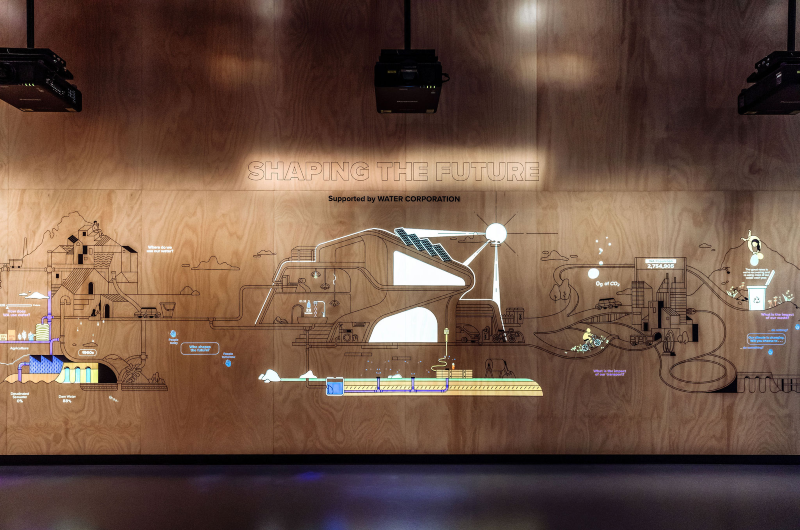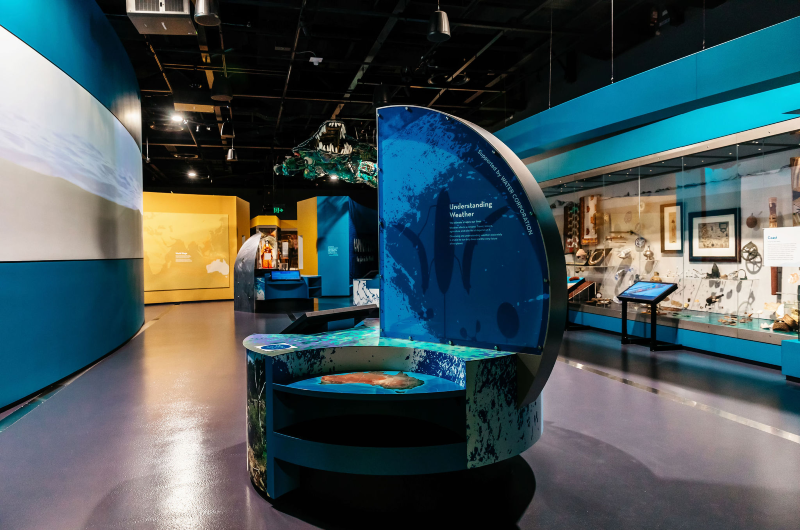Explore Western Australia’s water past, present and future at the WA Museum Boola Bardip
Have you ever wanted to go back in time to experience how Western Australia’s distinct environment came to be? Or travel into the future to see how our actions today will shape the way future generations live? And sneak in a little educational experience for the kids in the process?
Take the family to the WA Museum Boola Bardip for a hands-on day of learning. We’ve partnered with the Foundation for the WA Museum and the WA Museum to create an interactive experience highlighting how water and climate have played a key role in creating WA's unique environment and continues to shape our state’s future.
Our past and present
Get a closer look at some of our state's historic water infrastructure with 5 meters of the 1930s Depression-era wooden karri stave pipe—a section of the Golden Pipeline—on display outside the Museum's Changes Gallery.
The Golden Pipeline has been supplying Kalgoorlie with water for over 100 years and is considered an engineering marvel. Water was as precious as gold for Kalgoorlie and its surrounding communities in the 1800’s. People relied on water, quite literally ‘carted’ in by horses.
As the population of miners grew, the colony’s Chief Engineer, Charles Yelverton O’Connor suggested a radical solution to build a pipe from Perth.

In 1903, despite public scepticism and geographical challenges, water pumped along the Golden Pipeline to the Goldfields from Mundaring Weir, over 600 kilometres away.
Although the pipeline is still in operation today, like all water sources across Western Australia, it has had to adapt due to climate change.
Mundaring Weir receives far less rainfall than it once did. The Golden Pipeline that once only transported water from rainfall, now supplies towns with a combination of rainwater, desalinated seawater and groundwater.
Educating the community on the importance of water and climate
As climate change continues to impact our water sources and drive dryer conditions, it has never been more important to understand our water history and what we can do today to make a difference for future generations.

At the Shaping the Future display in the Changes Gallery, you can gain a better understanding of how human-related activity such as waste management, water and energy use have changed over time and are impacting our environment.
This display will evoke reflection on how water and climate are intrinsically linked and educate everyone of all ages about environmental issues and the preciousness of water in WA.
By raising awareness of our past, present and future, our community can learn about the importance of staying waterwise and inspire action to make a difference.
Step into our Interactive Island displays to learn about the integral role of water
Our Interactive Islands can be experienced at the Global System area of the Tianqi Lithium Connections Gallery. They feature tactile, interactive elements, with digital and object displays supported by a multimedia wall and ocean current floor projection to stimulate your senses.
Here you can experience the role water plays in our life and our planet, the oceanic and climatic processes that have created Western Australia’s distinctive environments, biodiversity, weather systems and unique physical history.

Understanding Weather Island
- Learn how global weather systems impact Western Australia’s climate, climate change, environment and life.
- Explore how weather affects all of us and our future.
Connected Planet Island
- Learn how Western Australia was formed out of its physical connections to other parts of the planet.
- Understand the past, present and future movements of the Earth’s plates.
- Investigate how Western Australia has been physically connected to the rest of the world.
Currents, Winds and Waves Island
- Learn how global oceanic processes impact the Western Australian environment.
- Explore the physical nature of the currents, waves and winds of the Indian, Southern and Pacific Oceans and their impacts on Western Australia’s weather and environment.
- Consider your own knowledge and experience of the currents, waves and wind around Western Australia, using the observations and experiences of naturalists, explorers and scientists.
Find out when you can visit and experience this insightful display.
You can also learn more about the impact climate change is having on our state.